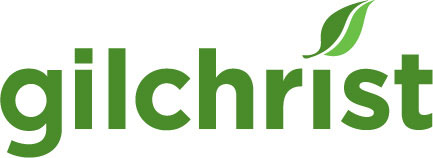Understanding Medicare and Medicaid in Hospice
When facing the complexities of end-of-life care, understanding the financial aspects can bring much-needed peace of mind. At Gilchrist, we aim to make hospice care accessible and stress-free for patients and their families by offering comprehensive services through Medicare, Medicaid, and private insurance plans. Here’s what you need to know about how these programs work within our hospice services.
What is the Medicare Hospice Benefit?
Medicare plays a significant role in covering hospice care in the United States. Under the Medicare Hospice Benefit, eligible patients receive 100% coverage for hospice services with no out-of-pocket expenses. This ensures that patients and their families can focus on comfort and quality of life without financial strain. Similarly, Medicaid and most private insurance plans cover hospice services, often with similar benefits.
At Gilchrist, each patient receives a personalized plan of care designed to address their unique needs and those of their caregivers. The Medicare Hospice Benefit encompasses a wide array of services, including:
- Home Visits: Provided by a multidisciplinary team, including nurses, social workers, hospice aides, chaplains, physicians, nurse practitioners, and volunteers, as outlined in the patient’s care plan.
- Medications and Supplies: Coverage includes medications, supplies, and durable medical equipment related to the hospice diagnosis.
- Caregiver Support: Assistance with advance care planning, education, and ongoing support.
- Emotional and Spiritual Care: Counseling services for patients and families, including grief support before and after death.
Who is Eligible for the Medicare Hospice Benefit?
To qualify for the Medicare Hospice Benefit, patients must meet the following criteria:
- Medicare Part A Enrollment: Patients must be enrolled in Medicare Part A.
- Focus on Comfort Care: Patients must agree to pain and symptom management rather than curative treatments.
- Six-Month Prognosis: A hospice medical director or community physician must certify that the patient has a prognosis of six months or less if the illness runs its natural course.
“Medicare covers hospice care for individuals with a life expectancy of six months or less. To qualify, two physicians must certify that, based on their professional assessment, the patient’s condition is likely to follow that trajectory. Initially, hospice care is certified for two 90-day periods, totaling six months. However, it doesn’t end there—after the initial period, eligibility is reassessed and can be renewed every 60 days. Hospice is truly an open-ended benefit. When it was first introduced, it was more limited, originally restricted to six months. But now, as long as a physician continues to certify that the patient’s life expectancy remains six months or less, hospice care can be extended,” shares Gail Blackburn, Gilchrist Senior Director of Hospice Operations.
Levels of Care Under the Medicare Hospice Benefit
As patients’ needs evolve, their level of care may also change. Medicare allows for four levels of hospice care to address varying circumstances:
- Routine Care: This is the most common level of care provided wherever the patient resides, whether at home, in a senior living community, or a nursing home.
- Respite Care: When caregivers need temporary relief, patients can receive care in a Care Center for up to five days.
- Inpatient Care: For patients requiring short-term, intensive medical management of acute symptoms, round-the-clock care is provided in a Care Center.
- Continuous Care: When acute symptoms cannot be managed through routine care, continuous nursing care is available for at least eight hours daily until symptoms are under control.
Medicaid and Private Insurance Coverage
In addition to Medicare, Medicaid and most private insurance plans provide coverage for hospice care. Medicaid’s benefits are similar to those offered under Medicare, ensuring that financial considerations do not become a barrier to receiving compassionate end-of-life care.
Living Every Moment with Compassionate Care
At Gilchrist, we are honored to assist patients and their loved ones in navigating advancing age, serious illness, and end-of-life care. Our integrated care model extends the highest quality clinical and compassionate care wherever it is needed most—across care settings, private residences, and senior living communities. Whether time with us is measured in years, months, days, or hours, our mission remains the same: ensuring our patients live every moment to their fullest.
“I suggest reaching out to someone at Gilchrist, as every case is unique, and discussing it can often provide clarity. If there’s something that requires further research, we can look into it and follow up. Whether it’s discussing a decision about a treatment plan or exploring available options, we’re here to help,” says Leana Hoover, Gilchrist Chief Operating Officer.
If you have questions about the Medicare Hospice Benefit, Medicaid, or any aspect of hospice and palliative care, Gilchrist is here to help. Our team is available to discuss your concerns and provide clarity, ensuring that every decision is informed and centered on what matters most to you and your loved ones. Call 888.823.8880 or visit https://gilchristcares.org/


